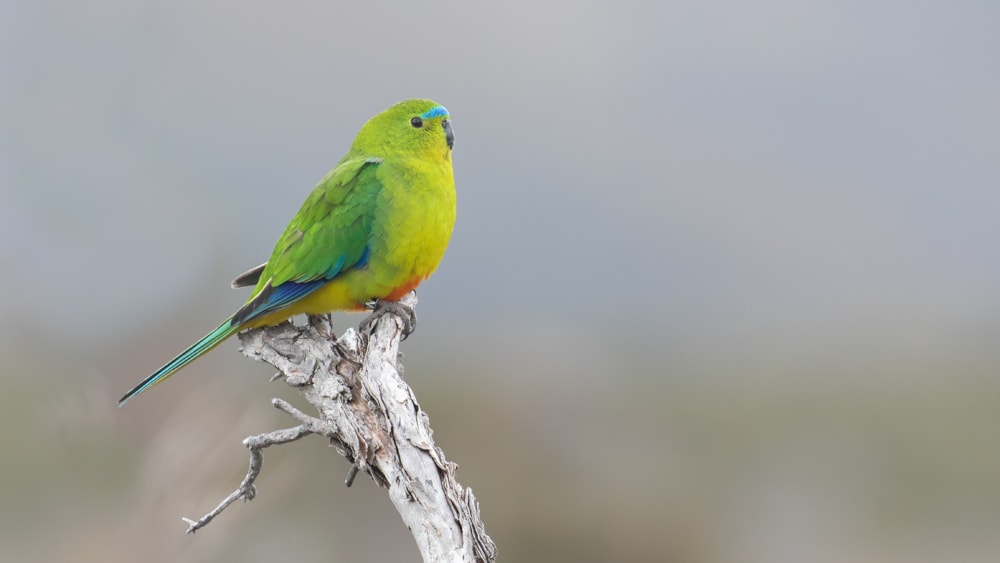Best spring in a decade for Critically Endangered parrot
Scientists are cautiously celebrating the best year in a decade for what may be the world's most Critically Endangered parrot after at least 40 birds returned to their only breeding site in remote Tasmania.
Orange-bellied Parrot numbers have fallen so sharply in recent years that scientists consider it at risk of extinction within five years. Only 23 birds arrived at the species' breeding site at Melaleuca, deep in the Tasmanian Wilderness World Heritage Area, last spring. But a year on, scientists are expecting to double that number after the successful release of parrots from a captive breeding program a year ago.

At least 40 Orange-bellied Parrots have already returned to their Tasmanian breeding grounds this season (Josh Jones).
Tasmanian government scientists released 34 adult birds, and the mix of wild and captive parrots produced 37 fledglings. The flock was further boosted in February with the release of 49 captive-bred juveniles, increasing the total number heading north for the winter to 118. Protecting the budgie-sized species when it is on the move is difficult given migrating birds fan out across the southern mainland and Tasmania's north-west. At the time, scientists hoped at least 40 would return to Melaleuca for the spring.
That number has been reached relatively early in the season, with 23 females and 17 males having made the journey back. Previously, the largest number of parrots to have returned to Melaleuca over the past decade was 35 in 2014-15. At its lowest point three years ago, the breeding population in the wild fell to 17, including just three females. It means the species has a significantly reduced gene pool, increasing the risk of disease having a species-wide impact as remaining birds have similar patterns of immunity.
Despite the increase in numbers, the parrot population is still considered perilously low and reliant on scientific intervention. A study published earlier this year found that work at Melaleuca, which includes providing nest boxes and food, had increased the number of birds that leave the breeding ground but had no impact on overall survival up to the year 2017.
Scientists are working to again increase the flock by releasing captive-bred parrots, starting with 31 adults released last month. More juveniles bred at the government facility at Five Mile Beach, near Hobart Airport, will join them in the new year.

